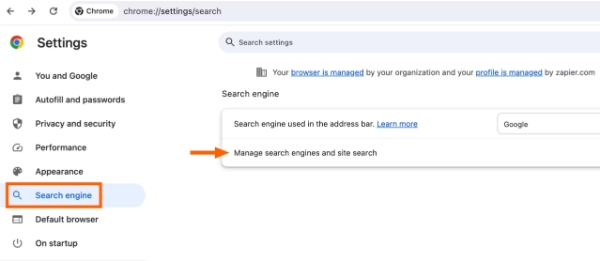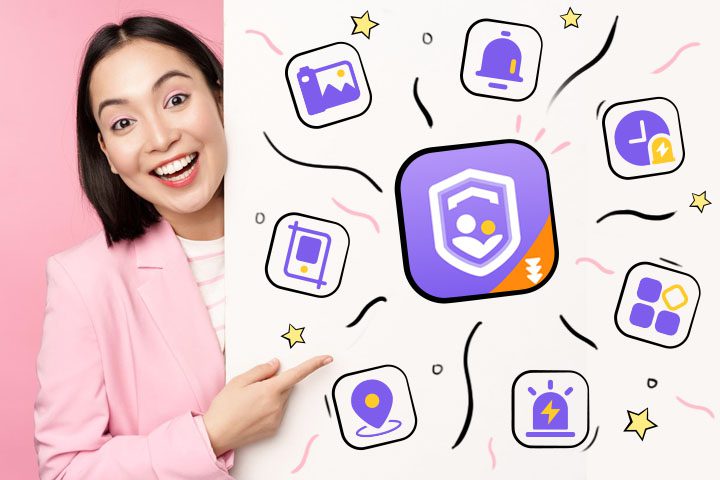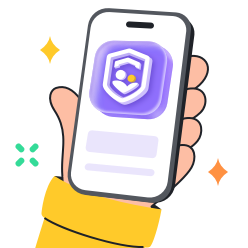Besides the fact that the Internet provides us with unlimited possibilities for education and entertainment, it can also become a source of negativity, information overload, and distractions. With content filtering, you can create a more personalized environment that promotes concentration, mental health stability, and desirable internet usage.
This article will take you into the complicated world of content filtering. And analyze its multidimensional function as a gatekeeper of digital content, which ultimately leads to a digital community that promotes your overall well-being.
What is content filtering?



Content filtering refers to the process of monitoring, controlling, and restricting access to certain kinds of online content and materials.
You can implement it with software or hardware tools to examine and categorize digital content based on user-defined rules.
It safeguards you from explicit, adult content, hateful and discriminatory material, violence, malware or phishing sites, and even content about illegal transactions.
Types of content filtering
Content filtering is flexible and applicable to different cases and environments for a particular purpose.
Here are some common types of it:
- Email filters: These filters oversee both incoming and outgoing emails, attachments, and links. They detect and remove spam, phishing, malware, and other dangerous or unwanted components.
- Web filters: Internet filtering (web filtering or online filtering) is a practice that applies policies set to limit and censor access to websites prior to allowing them to be seen.
- Search engine filters: Search engines use filters to censor and remove inappropriate results or those against user interests, certain topics, and rules.
- Social media filters: Many social media platforms have introduced filtering tools that let people filter out posts, comments, and media that violate their code of conduct, such as insults, hate speech, and explicit content.
- Network filters: The filters at the network level look for and manipulate data packets being transferred. Based on the protocols and policies, they can either prevent or allow certain traffic types.
- Application filters: These filters can be incorporated into some specially designed apps or software that could filter such content, for example, messaging apps or internet forums.
What are the benefits of content filtering?
Moderation of content gives a lot of benefits for different kinds of fields, which leads to a safe and clear online community. Here are some key benefits of content filtering:
- Protection from harmful or inappropriate content: This feature builds a safe environment in which minors and other users won’t have the risk of seeing inappropriate, abusive, or harmful content.
- Improved productivity and focus: Filtration and cleaning of background noise and spam will increase the quality of a work or study environment for staff or students by removing distractions and improving their productivity.
- Network security and data protection: It can restrict access to malicious websites, block malware or virus downloads, and prevent phishing or other cyberattacks.
- Compliance with regulations and policies: It provides an opportunity to impose the rules and provide a guarantee that they are followed, therefore, legal as well as reputational risks are reduced.
- Parental control and child safety: Parents are now able to employ content filtering software, which is often used for managing the information their children view online, thus saving the kids from bad content.
Best practices for content filtering in 2024
Content filtering solutions have been improved significantly, with the invention of new functionalities and features to safeguard users and their digital environment.
Here are some of the best practices and technical improvements in content filtering for 2024:
- Contextual analysis with natural language processing: More complex NLP techniques are now part and parcel of information screening mechanisms that can properly read between the lines and extract contextual meaning hidden in the information.
- Adaptive machine learning (ML) models: Additionally, integrating adaptive machine learning models helps content filtering systems be trained and improved continuously based on users’ feedback, trend changes, and threat increases.
- Multi-factor content analysis: The current content filtering tools utilize multi-factors analysis method that are the combination of keyword filtering, image and video analysis, sentiment analysis, and link analysis.
- Integrated parental control dashboards: The content filtering tools provide a dashboard and mobile applications that allow parents to monitor their children’s web activities and receive instant alerts and notifications.
- Privacy-preserving content filtering: Privacy-preserving technologies are another part of the content filtering solution. Content is filtered without private information or sensitive data being divulged.
How does content filtering work?
Content filtering uses techniques and technologies to sort digital content into predefined categories and then set rules or policies that permit defined access to that content.
Content analysis and categorization
- Keyword and phrase matching: Content filtering systems exploit databases of predefined keywords, phrases, or regular expressions to detect harmful or inappropriate data.
- Contextual analysis: The well-developed techniques of natural language processing (NLP) and machine learning (ML) models allow for determining the context. They don’t just match keywords; they also infer meaning behind the content.
- Media analysis: For images, videos, and other media, content filtering encompasses techniques such as object detection, facial recognition, and optical character recognition (OCR) to analyze the content.
Policy and rule management
- Content categories: Content is divided into predefined categories as a result of the analysis that has been done. That involves adult content, violence, hate speech, malware, etc.
- Filtering policies: The administrators or users develop the policies that determine the category of content that is supposed to be blocked, allowed, or monitored, depending on the set use case or need.
- Rule customization: Content filtering solutions provide many granular rule customizations, which enable users and organizations to define their own exceptions, white lists, or black lists according to their purposes.
Content filtering enforcement
- Network-level filtering: Internet service providers (ISPs) or corporate networks can set up content filtering on the network level. And, if necessary, block or allow access to particular websites or online services through their IP or domain names.
- Application-level filtering: It can be integrated into different web browsers, email clients, messaging applications, or other software products, allowing them to regulate the content accessed or shared within these applications.
- Device-level filtering: You can install content filtering tools on devices such as PCs, cell phones, or tablets to filter content locally.
Reporting and monitoring
- Access logs: Content filtering systems track the access logs of blocked or allowed content, thus creating a record of the users’ activities and filtering decisions.
- Alerts and notifications: Administrators and users will react promptly and govern appropriately when they are alerted or notified of specific content being accessed or blocked.
- Reporting and analytics: Extensive reporting and analytics tools enable companies to analyze block patterns, detect possible problems, and improve their policies regularly.
How to turn on or turn off content filtering?
Ways to turn on content filtering
Content screening can take place on different devices and platforms. Here’s a breakdown of how to get started on some popular options:
Web browsers:
- Navigate to your browser’s settings page.
- Locating the “Privacy and Security” or “Content Settings” menu.
- Choosing “Pop-ups,” “JavaScript,” “Cookies,” or “Website Permissions” among the options.
- Next, you can set up a block or restriction list. It is a mechanism that helps to control and limit the content elements on the sites.
Search engine filters:
- Open up the browser settings of your preferred search engine.
- Go to the “Search Settings” or “SafeSearch” section.
- Make sure to turn on the “Strict” or “High” filtering level to prevent adult content from popping up in search results.
Operating systems:
- First, open your operating system settings menu.
- Find the “Parental Controls” or “Family Safety” menu.
- Create a user’s profile for a person whose content you’d like to filter.
- The profile settings allow you to block access to undesirable web pages and apps and specify the online time.
Using third-party parental control software:
This third-party parental control software offers more extensive content filtering than built-in device features.
Such type of applications usually requires installation and configuration, giving you a broad range of possibilities, like monitoring of website access, app usage, and screen time.
Ways to turn off content filtering
Content filtering can be very helpful, but there are cases where you may want to turn it off.
- Overly restrictive filtering: Filters can sometimes be on the overly cautious side and block legitimate websites as well as legitimate content. Disabling filters provides an opportunity to get hold of such valuable information.
- Limited functionality: Some of the content filter functionality can inadvertently block material that would have been useful regarding some topics. Disabling some filters could be useful to gain access to a broader range of information for specific activities.
- Technical troubleshooting: In rare cases, content filtering can interfere with access to some websites or applications. Turning off the filters for a short period can help you identify the root cause and check if the filters are the problem.
- Inaccurate blocking: Such a case might occur where the system blocks the correct content. Disabling filters allow you to access the exact information you need.
Here’s a breakdown of how to turn off it on some popular platforms:
Web browsers:
- Go to your browser’s settings tab.
- Look for the “Privacy and Security” or “Content Settings” tab.
- Click on one of the options related to “Pop-ups,” “JavaScript,” “Cookies,” or “Website Permissions.”
Search engine filters:
- Open the settings page of your search engine.



- Search for the “Search Settings” or “SafeSearch” item.



- Choose the “Moderate” or “Off” filtering modes for more specific search results.
Operating systems:
- Enter the control panel of your OS.
- Go to the parental controls section or the family safety section for these instead.
- Within the targeted user profile, remove restrictions to websites, applications, and time limits.
Third-party apps:
The procedure will differ from program to program. In this case, the tools will possess an option to turn off filtering. And it also has a “white list” feature that allows you to choose sites which are exempt to blocking.
Is content filtering always foolproof?
Content filtering is not always foolproof, and there are several reasons why it may not be entirely effective or reliable:
- Evolving threats: There are many malicious sites in cyberspace. Everyday, the web not only creates completely new websites every day but also generates false information. This makes it a bit difficult for the filters to stay on top of the latest threats.
- AI limitations: AI-based systems may not be able to deal with delicate things such as sarcasm, hyperbole, and context-specific language. This, in turn, may lead to the removal of the doubtful material or even the deletion of the important content.
- User workarounds: Technologically-informed users often evade content means of control. You can achieve it with the use of a proxy server, VPN, or DNS spoofing (slightly changing DNS).
- False positives: Filters sometimes also unintentionally block valid websites and content. This may be inconvenient for users so it might decrease their ability to notice important information.
- Limited scope: Filtration usually only involves filtering websites and mail. However, toxic material is also on social media networks, messengers, and other sites where the screening is not powerful enough.
What to do if your kids turn off adult content filtering on their phones?
In case kids have disabled mature content filters on all their smartphones, some methods may be implemented to restore order and ensure a much safer environment for them.
FlashGet Kids is an incredibly useful parental control app, among many others available today.



By this, parents can track and limit their children’s digital activities and block sites containing offensive content.
Parents also get a package of tools that will help them to monitor what their children do online. Here are some key advantages:
- Comprehensive content filtering: You can block any online content using predefined categories or personalized filters on this app. These may include adult content, violence, obscenity and other materials which may otherwise harm a person.
- Keyword monitoring and detection: The app uses technology to autonomously detect and block content containing specific keywords. It protects from any unwanted or worrying content.
- Activity monitoring: Through FlashGet Kids, you can oversee your kid’s internet activity, including browsing history, installed apps, and social media activity. This visibility allows you to stay informed about their digital footprint and intervene if necessary.
- Time management tools: The app enables you to set screen time limits, schedules, and bedtime restrictions. It helps your children develop healthy digital habits and maintain a balanced lifestyle.
- Location tracking: FlashGet Kids can track your child’s location using GPS, ensuring their safety when they’re away from home.
- Remote control and management: The app provides a user-friendly interface that allows you to manage and update settings remotely, ensuring consistent protection across multiple devices.
By utilizing a parental control app like FlashGet Kids, you can regain control over your children’s online experiences. This will help ensure shield them from adult content and other potential threats.
FAQs
What’s the difference between content filtering and moderation?
Content filtering is an automated process to block or allow access to content based on predefined rules. Content moderation involves human review and decision-making on appropriateness.
Does the iPhone have a content filter?
Yes, iPhones have built-in content filtering options through “Screen Time” and “Restrictions.” These allow parents to control access to websites, apps, and content.

